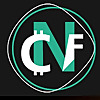ARTICLE AD BOX

- Shiba Inu’s Shibarium DApp Store launched on April 24 with over 1,200 decentralized applications, surpassing 1 billion transactions on Shiba Inu’s Layer 2 blockchain.
- Powered by Shibarium, an Ethereum-compatible Layer 2 network using roll-up technology, the DApp Store reduces gas fees and increases transaction throughput.
This week, Shiba Inu developers were unsurprised to see the long-rumored Shibarium DApp Store. The platform debuted with over 1,200 decentralized applications and surpassed 1 billion transactions on its Layer 2 blockchain.
Crucial Details Of Shibarium DApp Store Launch
The Shibarium DApp Store, which went live on April 24, is a major step for a meme-inspired crypto project. Being one of the top viral tokens, Shiba Inu has taken its place as a serious player in the decentralized tech world. The store is designed as a focused hub to access decentralized applications (dApps) built to run on the Shibarium network. For context, Shibarium is optimized to scale and reduce gas fees significantly over Ethereum’s main base layer, as highlighted in our previous news article.
The store serves as a vetted display of dApps to both users and dApp developers, putting them in a more streamlined gateway to the ecosystem. By aggregating correct, verified applications within a single interface, this launch gets rid of the guesswork that is so often found in decentralized environments.
Apart from user convenience, the Shibarium DApp Store also has a strategic opportunity for developers, according to The Shib magazine. When projects list, they gain a directly visible presence on Shiba Inu’s large online community, aka the ‘SHIB Army.’ Having an audience built into the dApp could enable dApps to immediately jump ahead in the game of exposure versus success and skip the painful discovery and adoption phase.
Moreover, the infrastructure beneath the DApp Store is powered by Shibarium, Shiba Inu’s Ethereum-compatible Layer 2 network. The blockchain uses roll-up technology to process transactions off-chain before confirming them on Ethereum. Thus, it significantly enhances throughput and minimizes fees.
Moreover, compatibility with the Ethereum Virtual Machine (EVM) ensures developers can use familiar tools and programming languages such as Solidity. It thereby eases the transition for existing Ethereum developers.
Shiba Inu Team Rolls Out Major Tools
Shiba Inu has further induced development by introducing a suite of tools under its developer initiative. This includes SDKs, ShibPay as a payments SDK, Central Authentication Service (CAS), and support for Paymaster and Identity in general modules. There are plans for the introduction of Oracle services and decentralized storage options.
In addition, there are other mechanisms, such as Shib Torch and Karma reward systems, for the integration of gamified engagement and community interactions. Privacy protections were also on the agenda as plans to utilize the Fully Homomorphic Encryption (FHE) are made for future iterations.
That came just as Shibarium has been experiencing a period of quiet but considerable growth. The project has had over 175 million wallet interactions and over 24,000 deployed smart contracts. These numbers show strong activity, but now, they have shifted their focus towards measuring real user engagement with the listed applications. It serves as a key metric in assessing the platform’s sustainability and long-term value in the increasingly competitive Layer 2 industry.
.png)
 3 hours ago
1
3 hours ago
1








 English (US)
English (US)